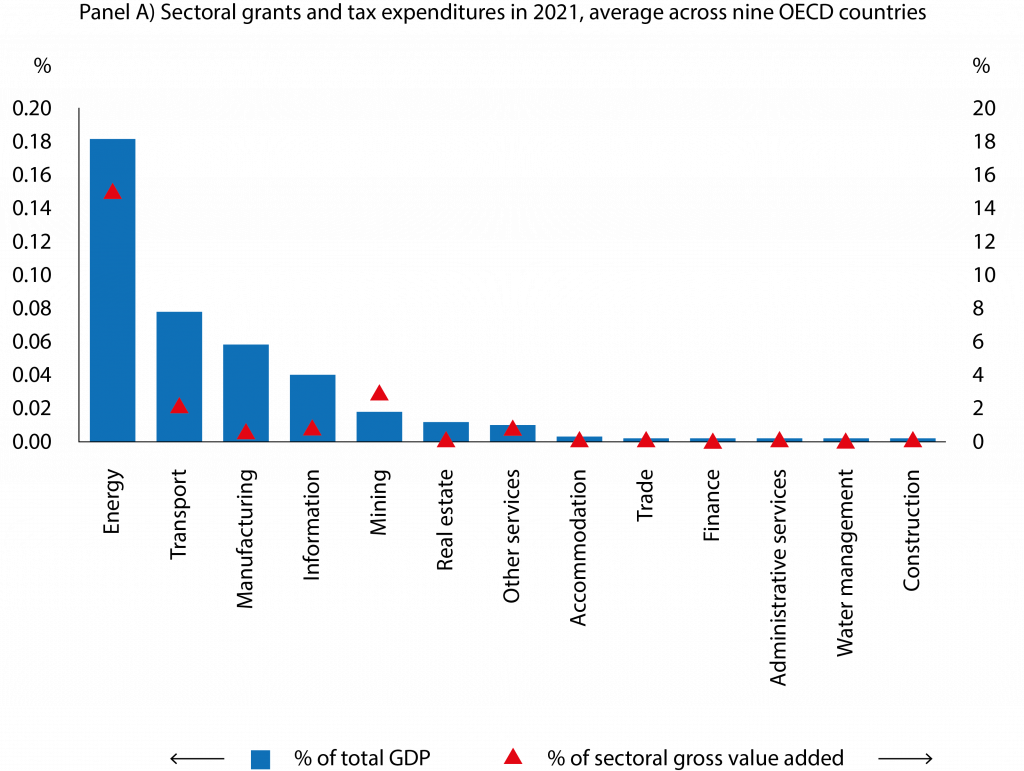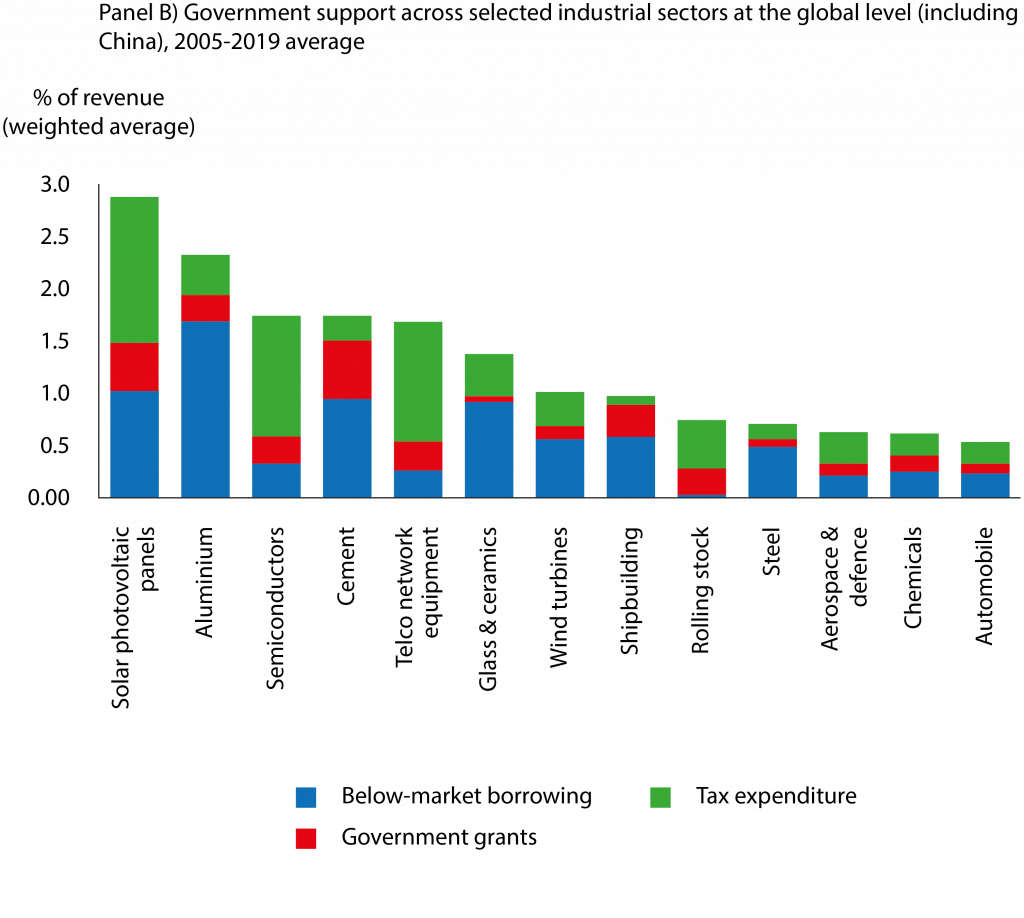The return of industrial policies
Valentine Millot is an Economist and Łukasz Rawdanowicz a Senior Economist, at the Organisation for Economic Co-Operation and Development (OECD)
Industrial policies have again risen in prominence in advanced economies with the series of economic crises, rising geopolitical risks, and increased awareness of environmental challenges. In our recent paper (Millot and Rawdanowicz, 2024), we contribute to renewed debates about these policies by discussing the pros and cons of industrial policies motivated by different objectives, and propose a few principles to inform policy guidelines.
What is industrial policy and how much is happening?
While discussions about industrial policies are intensifying, their exact definitions and their differences with trade, environment, innovation, and tax policies are debated.
Industrial policies commonly refer to government financial and non–financial support to businesses to boost or reshape specific economic activity. Government support to businesses can be broadly available to all firms across the economy (ie. horizontal) or be more narrowly targeted based on activity, technology and/or location.
In our paper, we focus primarily on targeted measures, which are both increasingly used in recent years and raise more concerns about their implications for domestic and international markets and rules-based trade.
Assessing the scope and scale of government industrial policies, and their evolution over time, is notoriously difficult (Warwick and Nolan 2014, Terzi et al 2022, OECD 2023). This is due to a persistent lack of reliable and cross-country comparable data (OECD 2023, Juhász et al 2023) and the absence of consensus about the definition of industrial policies.
The OECD has made headway in filling the data gaps. Through the Quantifying industrial strategies (QuIS) project and sectoral studies for selected industries, the OECD has gathered harmonised data that facilitate the benchmarking of industrial strategies across countries in terms of industrial policy expenditures, priorities, instruments, and recipients (Criscuolo et al 2023, OECD 2023).
Available data suggest that many governments around the world have actively provided various forms of support to selected industries, though with different intensity across time and countries, and that industrial policies are an important part of economic policies in advanced and emerging market economies.
For nine OECD countries, industrial policy grants and tax expenditures were on average around 1.4% of GDP in 2021. However, they varied significantly across the countries, ranging from around 2.25% of GDP in France and the UK to around 0.75% of GDP in Ireland and Canada (Panel A, Figure 1).
According to firm-level data for the largest global manufacturing companies, government support (including grants, below-market borrowing, and tax expenditure) differed across sectors (Panel B, Figure 1). The average support at the global level in 2005 19 ranged from around 2¼-3% of total sales in solar panels and aluminium to around 0.5% of total sales in automobile, aerospace and defence, and chemicals sectors.
In many sectors, including in aluminium, steel, glass and ceramics and wind turbines, government support was mainly in the form of below-market borrowing, though tax expenditures were also very important, especially in telecommunication network equipment, semiconductors, and rolling stock.
Figure 1. The extent of government support varies substantially across sectors


Note: In Panel A, the nine countries are: Canada, Denmark, France, Ireland, Israel, Italy, the Netherlands, Sweden and the UK. Policy instruments targeting agriculture are excluded from the scope of the report. In Panel B, data are expressed relative to the sales revenue of the firms covered in the study over the period 2005-19 and weighted by firm revenues. Firms both from OECD and non-OECD countries (including China) are included. Tax expenditures are less directly comparable across jurisdictions and sectors than grants and below-market borrowing. This is because any given tax expenditure can result in a different amount of tax revenue forgone as tax parameters vary across countries.
Source: Criscuolo et al (2023) and OECD (2023).
Recently, several advanced economies have revived industrial policies to support green and digital transitions as well as employment. For example, to meet these objectives, the US government implemented in 2022 the CHIPS and Science Act and the Inflation Reduction Act (IRA).
These initiatives have been partly motivated by the perceived need to respond to the growing economic power of China, which has been using large-scale state interventions for decades.
In response to strategic and environmental challenges and, in some cases, also in reaction to US and Chinese industrial policies, several OECD economies have proposed or implemented similar measures.
Industrial policies should be justified by cost-benefit considerations
Industrial policies can play a role in addressing important economic, social, and environmental challenges that markets cannot deal with on their own.
When they are successful, industrial policies can bring large benefits for the nation concerned. They could also have positive international spillovers, for instance if they lower the cost of the climate transition.
However, industrial policies entail costs, including fiscal ones. They can create market distortions that have negative effects on innovation and the availability and prices of goods and services. Costs can be particularly high when measures effectively limit competition and increase protectionism. Ultimately, they may reduce market contestability and undermine the rule-based trading system.
Industrial policies can play a role in addressing important economic, social, and environmental challenges that markets cannot deal with on their own
Debates about industrial policies have not yet been resolved in view of challenges with their evaluation and the existence of both negative and positive examples (Karp and Stevenson 2012). Still, a serious assessment of costs and benefits should be attempted to inform policy makers. It should extend beyond measuring the short-term direct impact on the targeted sectors, firms, or technologies.
Analysis should focus on overall effects in the longer term, including domestic and international spillovers and on a wide range of fiscal costs. The uncertainties surrounding the estimates of the costs and benefits call for considering various alternative scenarios of possible outcomes. The distributional impact of industrial policies across firms, households, and taxpayers should also be assessed.
Despite well-grounded economic, social, and environmental justifications for some industrial policies, there are legitimate concerns that the benefits of some of these policies could be limited and the costs high. This mainly relates to measures curbing competition and the practical and political challenges in designing and implementing effective measures.
Thus, while governments may want to experiment with future and welfare oriented industrial policies, they should exert moderation in scope, exercise caution in design and implementation, and be mindful of possible negative international implications that can undermine the rule-based trading system.
Towards policy guidelines
While our understanding of industrial policies is imperfect and continues to evolve with new data and evidence, basic principles inform tentative policy guidelines for governments planning to use targeted industrial policies:
Be clear and realistic about what they are trying to achieve. Industrial policies can help to deliver urgent climate objectives, improve economic security and resilience, and support distributional outcomes, but to a varying extent.
Prioritise areas where existing structural challenges cannot be addressed solely by markets and other government policies and where these challenges imply high and growing societal costs. Consider whether industrial policies are effective and efficient to pursue those objectives, and what other government policies will be needed for the full range of expected benefits to be achieved.
Design tailored, proportionate, and comprehensive measures based on the diagnosis of main problems and experience. This will help to boost benefits and to minimise the economic and fiscal costs, both domestically and internationally. Favour measures that:
– do not restrict competition and encourage the development of markets and new entrants rather than favouring incumbents.
– minimise negative spillovers on international markets and help promote international co-operation and rules-based trade.
– are limited in time and size, using for example sunset clauses and claw-back arrangements. Still, ensure that policies are sufficiently persistent and predictable to be able to change the behaviour of firms and individuals, including by clear and consistent messaging on the duration and terms of policies.
– are transparent to enable public debate and independent analysis as well as to protect against domestic capture.
– incorporate evaluation from the start. Ensure that data necessary to undertake it are collected. Establish regular review and feedback mechanisms and adapt policies as you learn. Introduce institutional safeguards for ending the government support where objectives are not being achieved or unintended consequences alter the cost-benefit assessment of programmes.
– ensure a competitive, non-discriminatory, and transparent design of the selection process of businesses to be helped, to avoid favouring incumbents and deterring new entrants. Consider delegating such selection processes to expert institutions free from political pressures, while safeguarding democratic oversight and accountability.
Work with stakeholders when identifying the main obstacles to achieving the policy objectives as well as the need for and appropriate design of industrial policy measures, including to mobilise public support.
References
Criscuolo, C, L Diaz, G Lalanne, L Guillouet, C-E van de Put, C Weder and H Z Deutsch (2023), “Quantifying industrial strategies across nine OECD countries”, OECD Science, Technology and Industry Policy Papers, No. 150.
Juhász, R, N Lane and D Rodrik (2023), “The New Economics of Industrial Policy”, NBER Working Paper 31538.
Karp, L and M Stevenson (2012), “Green Industrial Policy – Trade and Theory”, CUDARE Working Paper No. 123637.
Millot, V and Ł Rawdanowicz (2024), “The return of industrial policies: Policy considerations in the current context”, OECD Economic Policy Papers, No. 34.
OECD (2023), “Government support in industrial sectors: A synthesis report”, OECD Trade Policy Papers, No. 270.
Terzi, A, A Singh and M Sherwood (2022), “Industrial Policy for the 21st Century Lessons from the Past”, European Economy – Discussion Papers, No. 157, Directorate General Economic and Financial Affairs (DG ECFIN), European Commission.
Warwick, K and A Nolan (2014), “Evaluation of Industrial Policy: Methodological Issues and Policy Lessons”, OECD Science, Technology and Industry Policy Papers No. 16.
This article was originally published on VoxEU.org.




